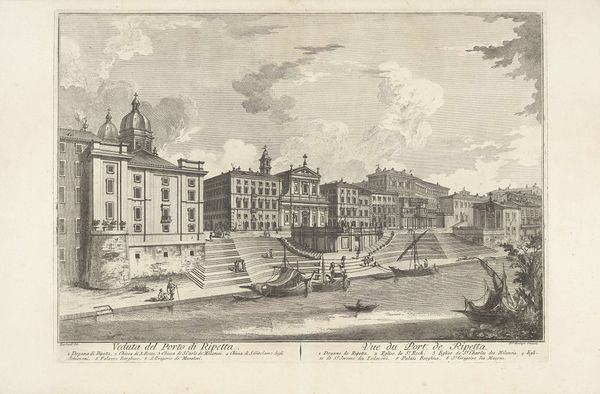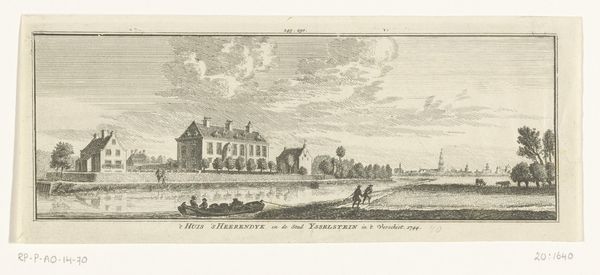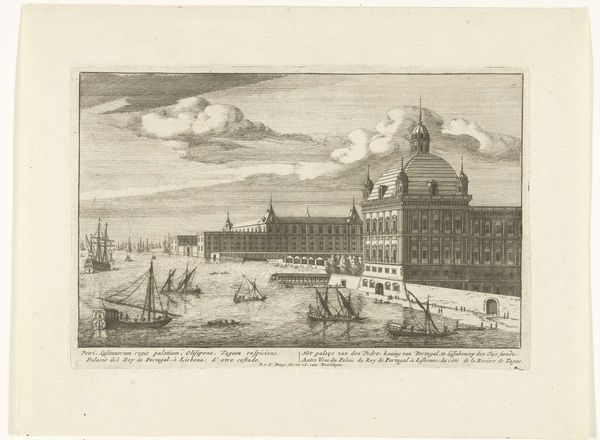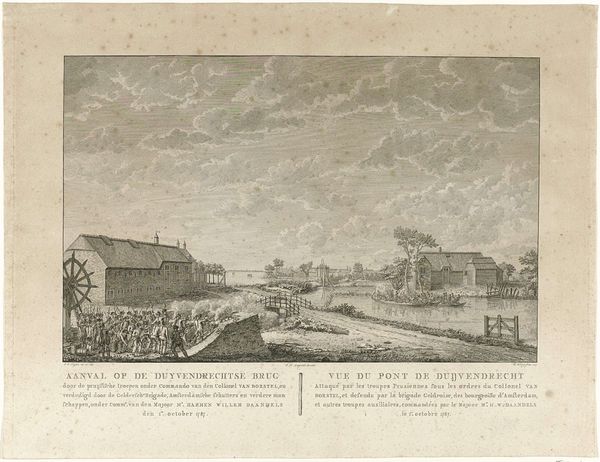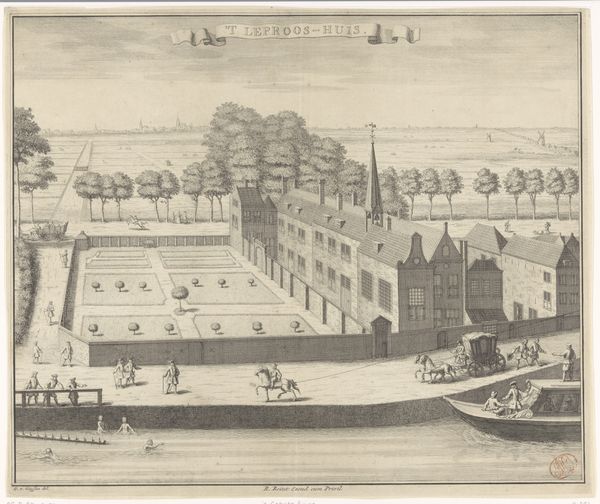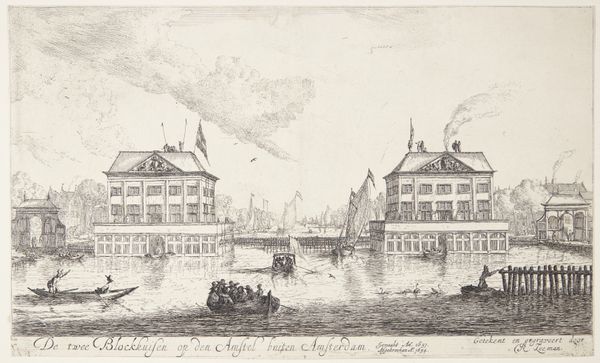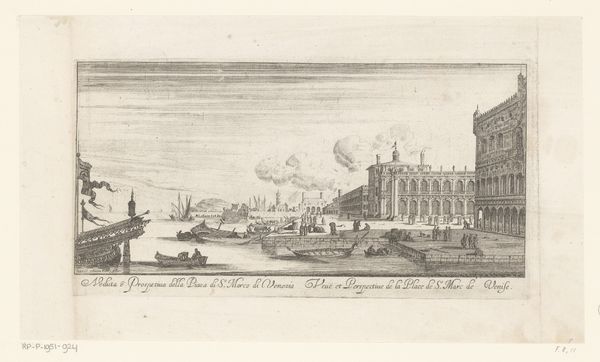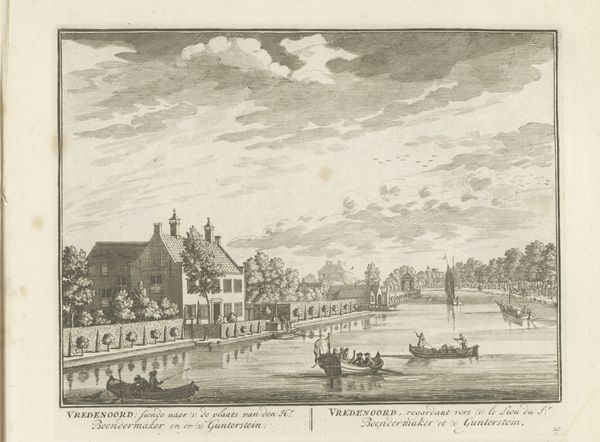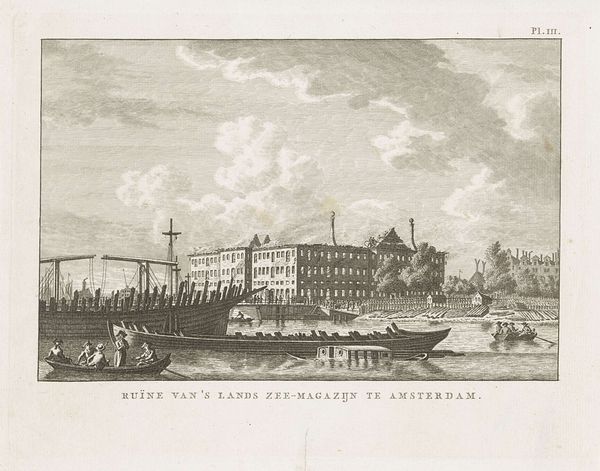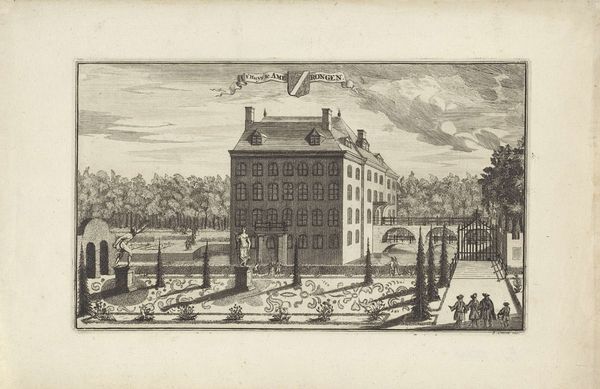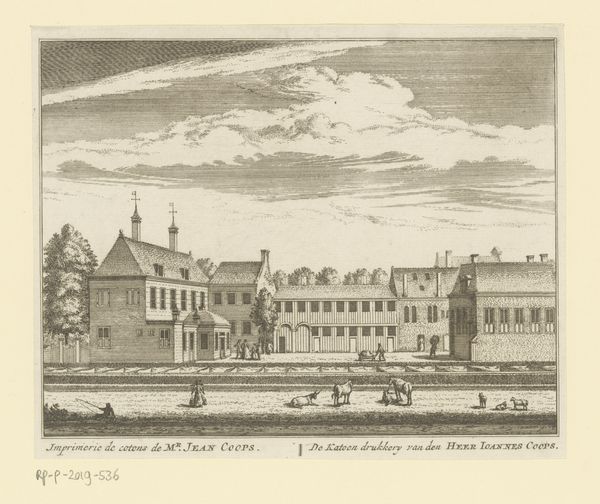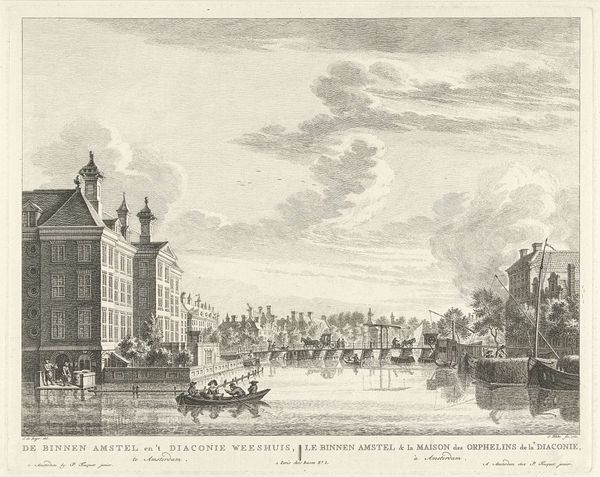
print, engraving, architecture
#
16_19th-century
# print
#
romanticism
#
architectural drawing
#
cityscape
#
history-painting
#
engraving
#
architecture
Dimensions: height 210 mm, width 319 mm
Copyright: Rijks Museum: Open Domain
Editor: Here we have Jacobus Wijsman's print, "Ruin of the East India Warehouse, 1822", made using engraving. It feels quite melancholy to me, this detailed depiction of decay. What strikes you about this piece? Curator: I see a powerful statement about the shifting economic landscape of the 19th century. Note how Wijsman meticulously renders both the ruined warehouse and the operational buildings adjacent to it. It prompts the question: What caused this ruin? The print serves as a material record of the decline of Dutch mercantile power, specifically the East India Company, whose warehouses were filled with goods produced through exploited labor and resource extraction. The remnants become a silent testament to changing modes of production and consumption. What materials do you think formed the original structure, and what do those materials signify? Editor: I'd guess mainly wood and brick, typical building materials of the time and place. But wouldn't the East India Company warehouses have held things like textiles, spices... much more valuable than the building itself. Curator: Exactly! Consider the labor invested not just in erecting these buildings but also in filling them. Each spice sack, each bolt of cloth, represents a complex web of human effort – often coerced – across continents. The image prompts a re-evaluation of the hierarchy that often privileges architecture over the items stored within. We must question whose labour is visible, and whose is erased, in this 'romantic' ruin. Editor: So it is less about celebrating history and more about recognizing the structures that uphold power dynamics in global trade? Curator: Precisely! By focusing on the material aspects – the building's degradation and the absent commodities – Wijsman’s print reveals the often-brutal processes inherent in the creation of wealth, then and now. Editor: I never considered that the ruin wasn’t just a ruin, it was speaking of systems collapsing!
Comments
No comments
Be the first to comment and join the conversation on the ultimate creative platform.
